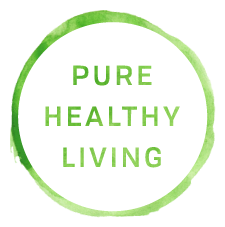Why You Should Stop Using Products With Palm Oil
Written By: Suzanne Kvilhaug
When it comes to ingredients, keeping track of what’s great, what’s not so great and what needs to be avoided entirely can feel overwhelming. You start to wonder if you should walk around with a little cheat sheet, make up a catchy song full of acronyms or have a website bookmarked on your phone to glance through before buying anything. If you consider yourself an eco-friendly shopper or want to become more of a conscious consumer, knowing more about palm oil and the story behind it is a must.
What is palm oil?
Palm oil is derived from the fruit of the oil palm tree. The palm fruit yields both palm oil and palm kernel oil. Palm oil is extracted from the pulp of the fruit and is an edible oil used in food. Palm kernel oil is extracted from the seed of the fruit and is used in the manufacture of cosmetics. As the World Wildlife Federation (WWF) notes, 85 percent of the global supply of palm oil comes from Indonesia and Malaysia, though at least 42 other countries also produce the oil.
Palm oil is the most widely consumed vegetable oil on the planet. The WWF estimates that palm oil is an ingredient in around 50 per cent of all supermarket products – from detergents and lipstick to ice cream and sausages. It’s been estimated that 3 billion people in 150 countries use products containing palm oil. In addition, much of the palm oil that is produced ends up in our vehicles in the form of biofuel.
Is palm oil healthy for you?
Palm oil has a nutritional profile that is similar to other cooking oils, according to the USDA. One tablespoon contains about 120 calories and 14 grams of total fat, including 7 grams of saturated fat (the same amount as in butter), 5 grams of heart-healthy monounsaturated fat, and 1.5 grams of polyunsaturated fat. Palm oil also provides 2 grams of vitamin E and 1 gram of vitamin K. It’s high in saturated fat and studies show that it actually raises LDL cholesterol. According to Harvard nutrition experts, palm oil is better than high–trans fat shortenings and probably a better choice than butter. The Human Food Project claims that palm oil causes low-grade inflammation that is linked to insulin resistance, obesity and other metabolic diseases that are partially mediated by our resident gut microbes.
Why do we use Palm Oil?
Palm oil can be processed and blended to produce a vast range of products with different characteristics. Palm oil can give products a longer shelf-life, can also sustain high temperatures, and is both odorless and colorless. Palm oil has low production costs that make it cheaper than other frying oils. Cosmetics manufacturers prefer it, it functions as a natural preservative in processed foods, and even raises the melting point of ice cream.
Why is it controversial?
Vegetable oils are one of the most traded global commodities, and this is particularly true of palm oil. The harvesting of this type of oil is being blamed for many negative environmental impacts.
Palm oil production is wiping out ancient forests, endangering wildlife and destroying communities. Palm oil deforestation releases high levels of carbon dioxide and destroys the habitat of some of Southeast Asia’s most valued wildlife.The clear-cutting of forests leaves species like tigers and orangutans without food or shelter and, as a result, a third of Indonesia's mammal species are now considered critically endangered.
In this destructive pursuit of palm oil, native people living in these forests are also threatened — they can be forced from their homes without any form of repayment.
To read more about issues regarding palm oil, check this out.
Are there sustainable methods for producing palm oil?
Yes. There are sustainable methods for producing palm oil that do not involve deforestation, human rights abuses, or animal deaths. The Roundtable on Sustainable Palm Oil (RSPO) has set bold guidelines to help reform the palm oil industry, promoting transparency, fair labor, and strict environmental standards. The RSPO has developed a set of environmental and social criteria which companies must comply with in order to produce Certified Sustainable Palm Oil (CSPO). When they are properly applied, these criteria can help to minimize the negative impact of palm oil cultivation on the environment and communities in palm oil-producing regions.
Is there a solution?
When you learn what palm oil is in, you can see that avoiding it at all costs could be near impossible. Instead of ending the use of anything with palm oil all together, a good place to start is to look out for products that have been responsibly sourced. Labels like “RSPO Certified Sustainable Palm Oil” distinguish the most tried-and-true eco-friendly brands. And companies are definitely working to change things, like this start-up that is making a palm oil alternative from used coffee grounds.
Common products USE palm oil:
Peanut butter
Ice cream
Soap
Instant noodles
Pizza dough
Bread
Margarine
Cookies
Chocolate
Lipstick
Shampoo
+ Here’s a brief list of the many brands and products that include palm oil as an ingredient
Palm oil Can be hidden on ingredient labels under many names, here’s what to look for:
Elaeis guineensis, Etyl palmitate, Glyceryl, Hydrogenated palm glycerides, Octyl palmitate, Palm fruit oil, Palm kernel, Palm kernel oil, Palm stearine, Palmate, Palmitate, Palmitic acid, Palmitoyl oxostearamide, Palmitoyl tetrapeptide-3, Palmityl alcohol, Palmolein, Sodium kernelate, Sodium laureth sulfate, Sodium lauryl lactylate/sulphate, Sodium lauryl sulfate, Sodium palm kernelate, Stearate, Stearic acid, Vegetable fat, Vegetable oil







